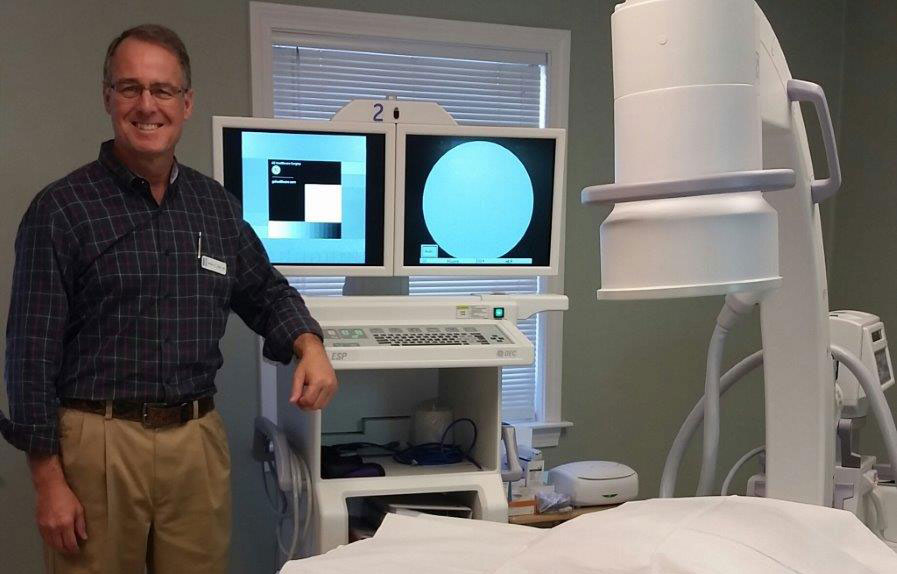Frequently Asked Questions
Click a question below to learn more.

How can you help treat my pain?
We figure out why you’re hurting, and treat the underlying problem, or help you find someone who can.
The long answer is that we diagnose and treat persistent acute and chronic pain disorders. Acute pain starts suddenly and often has an obvious cause like an injury. When this persists beyond the normal 4-12 week healing course with treatments like rest, ice, heat, progressive exercise, and over-the-counter pain medications, the treatments we offer may be instrumental in recovery. Chronic pain is arbitrarily defined as pain persisting for 3-6 months or more. Usually this means that there is an underlying abnormality that is resistant to healing properly. This is where our services really shine. We have the expertise and technology to diagnose and treat pretty much any chronic pain problem.
What is it like visiting your office?
We have designed our office to be a warm and welcoming place. Our friendly staff will treat you right, and tend to your individual needs. We see patients in our own offices for consultation and examination, not the usual arrangement of multiple exam rooms. We find this approach creates a more personal experience for our patients.
What kinds of treatments do you offer?
Almost all of our services involve minimally-invasive needle based therapies. This list of services we provide is long. Just for example, we have ten different types of shoulder injections! Treatments are carefully tailored to each individual patient.
We work in coordination with primary care providers, physical therapists, neurologists, surgeons, and psychologists to offer additional treatment if we feel you will benefit from it.
How do injections work to treat pain?
Injections work in a variety of ways depending on what is injected and where. Sometimes the goal is to treat inflammation at the source. Other times the goal is to release a nerve from entrapment, break up connective tissue adhesions, or calcified muscle tissue. In yet other cases, the needle is used to heat up and deactivate nerves that carry pain signals. In patients with compression fractures of the spine, we can inject cement into the fracture.
How do your injections differ from a “cortisone shot”?
A “cortisone shot” is usually an injection of steroid with or without some local anesthetic that your doctor may inject into the area where you are feeling pain, or simply into the buttock. The goal is generally to deliver a dose of steroids that lasts a few weeks, and may resolve your pain problem. The effects are often similar to what can be achieved with a simple oral steroid dose pack that you take over several days.
Our injections are placed very accurately under ultrasound or x-ray guidance with a goal of treating a specific problem that we identify based on your history, exam, and imaging or testing. In many cases, our injections provide diagnostic value unavailable without the benefit of imaging to guide the injection.
Do your injections hurt?
The vast majority of our injections are no more painful than a vaccination. Patients are often very surprised at the conclusion of an injection session and say things like “It’s over? I thought you were just getting started!” There are rare circumstances where a particular injection may cause significant discomfort or even pain, but we will discuss that in detail with you before proceeding. There are usually ways to avoid causing pain in these circumstances.
I know someone who had a bad experience with injection therapy, how can I be sure I won’t have a bad experience too?
We’re very good at what we do, conservative, careful, and have a lot of experience. Discuss your concerns with us at your initial visit, and I’m sure we can provide assurance your experience will be a good one.
What can I expect to feel after an injection?
That varies depending on what was done. Usually you will be sore for a few days, just like a vaccination, and then begin to experience relief of the usual pain. How much relief you have, and how long the pain relief lasts is variable and different for every patient. We’ll help guide you toward realistic expectations before we begin. In every case our goal is maximal pain relief for the longest duration possible.
I was referred to a different pain management practice, can I see you instead?
Of course! Consolidation in health care is functioning to limit patient’s options for referral to different specialist groups. In some cases there are inducements to send you to one place in particular for care (where it will usually be more expensive). The important thing to realize is that you always have a choice! Tell your care provider you want to see Northeast Pain Management and they will redirect your referral to our office.
Someone I know has a spine fracture and I’d like to know what can be done? Tell me about kyphoplasty.
Kyphoplasty is a minimally-invasive procedure we can do in our office to treat vertebral compression fractures. It involves placing a needle in the broken bone and injecting cement. The cement fills up the broken bone, fixing the fracture, and relieving a lot of pain in the process. Most of our patients feel much better within a few days, and sometimes the same day! The procedure itself takes about an hour, and doesn’t hurt. Call our office to discuss how we can help you.

